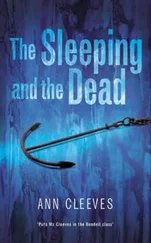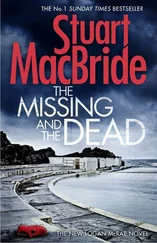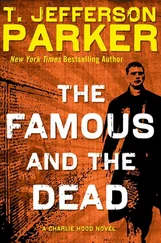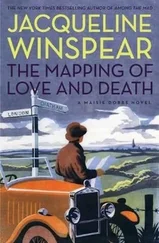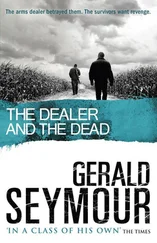As well as their surprise inside they had a very distinctive smell which, unfortunately, some of our body bags did too, but in a totally different way.
Suffice to say, to me every day was like Christmas Day in the mortuary. This was especially true one December when we opened a body bag to reveal a plump old man with white hair and beard in a full red jogging suit. To this day I’m not sure if he was purposely trying to resemble Santa or if it was just a huge coincidence.
Once the deceased is accessible, everything is noted in one glance: clothing, jewellery, money or wallet, medical intervention, visible tattoos, injuries and more. The height and weight of the deceased are written down for the pathologist and for the undertakers, who will be able to get a head start on the coffin order if they know the size in advance. This is done by using a long measuring stick and removing the patient’s tray from the cold store on to the trolley which has scales attached, then pressing the button to manoeuvre them up and down with an electrical screech. [7] During a radio interview I once had a woman point out that her weight still being an issue after death was an irritating thought, and I can see her point.
Identity tags are then checked: there should be one on the wrist and one on the ankle, and they obviously need to match each other. Any jewellery the deceased is wearing is noted down if it hasn’t already been recorded by the staff who delivered the body, and is double-checked by the APTs. There is a rule that the words ‘gold’ and ‘silver’ aren’t used in mortuaries because we can’t really be certain what metal items are actually made of. If we write ‘gold ring’ on the personal effects form and the next of kin see that and don’t find a gold ring on their deceased◦– because it was just a yellow tin ring from Topshop, for example◦– they could sue us for a ‘missing gold ring’. Instead, we say ‘white metal’ and ‘yellow metal’. It’s very festive when you get to sing ‘Five yellow metal riiiiings!’ to your colleague in the middle of December when logging property. For the same reason we never say ‘diamond’ or ‘emerald’ either◦– we say ‘white stone’ or ‘green stone’ instead.
Space can be at a premium in mortuary fridges◦– it’s popular real estate; people are dying to get in there after all◦– so the turnaround from arriving in the facility and having a post-mortem, then being released, shouldn’t be more than a couple of days. Often in the winter, when the death rate is higher, mortuary staff can descend into a bit of a panic if it looks as though the spaces are filling up, just in case there’s some sort of mass fatality, or a spate of unrelated deaths due to the cold, and they run out of room.
‘What are we supposed to do if the fridges get too full?’ I panicked to Andrew that first winter I worked at the mortuary and saw the number of decedents we received increasing.
He explained to me that mortuaries may charge a rate to the Coroner if decedents are there too long without Coronial intervention and release; that is, ensuring they are moved to a funeral home or similar. ‘It’s a day rate,’ he said. ‘We call it B&B.’
‘Well, really it’s just “B”,’ I countered with a wink, and Andrew smiled. It was nice to see him not so serious for once.
So already, by simply encountering the deceased, the external examination has begun, and in addition to the information already garnered, visual cues add further pieces to the puzzle. The size of the deceased’s body, whether excessively large or excessively slim, may have contributed to their death. Perhaps, in the case of anorexia or a wasting illness, the organs had simply failed? Obesity could indicate a heart attack, or else there may be visible injuries and external signs of what might have occurred. Another phenomenon noticeable on the exterior of the cadaver is evidence of one of forensic science’s most well-known tenets, Locard’s Exchange Principle, which stipulates that ‘every contact leaves a trace’. This guideline, attributed to French scientist Edmond Locard, dates from around 1910 and is the basic principle of all the ‘trace evidence’ referenced in crime fiction and on TV: hair and fibres, blood spatter and semen, footprints, tyre tracks and more. These can all be found at scenes, on the dead and on perpetrators, because every contact between one object and another causes materials from each surface to swap over. For our purposes, we can see from the body if the deceased had been involved in certain scenarios, particularly those to do with narcotics or violence. Leaves and twigs show someone was found dead outside, and conversely pen caps and newspaper print along with other household debris stuck to the decedent may indicate someone was discovered in an untidy home.
Immediately a picture begins to form.
The post-mortem colour of the deceased may also afford some sort of clue. People generally assume that all dead bodies are pale, but some are actually very pale: a dove grey compared to the usual ivory. It may take a while to notice these subtle differences but once you do you can diagnose a ruptured abdominal aortic aneurysm◦– or ‘Triple A’◦– by how pale the deceased is, and how suddenly death occurred. This particular cause of death happens very quickly, when an aneurysm of the largest artery in the human body, the aorta, bursts. Blood gushes into the abdominal cavity, leaving the victim looking like the freshly bled victim of a vampire in a Hammer Horror film, giving us mortuary staff clues by sight.
Or perhaps the deceased is slightly pinker than would ordinarily be expected. This can indicate death by carbon monoxide (CO) poisoning, because the CO binds in an unusual way with the haemoglobin in the blood, giving the decedent a cherry-red tint. (Haemoglobin is the main oxygen-carrying compound in the blood, and its potential to do its job correctly is disrupted by the presence of CO.) Conversely, they may be blue, indicating cyanosis caused by inadequate oxygenation which points to completely different causes of death, such as asphyxiation. The vast rainbow of colours in which the patient may present keeps the APT guessing about the circumstances of death. Fluorescent yellow? Liver failure. Purple? Congestion. Green? Well, the less said about green the better, really.
Another important aspect of the preliminary examination of our fridge’s residents is checking for pacemakers or implantable cardioverter defibrillators (ICDs), which are used to regulate people’s heartbeat in life. These particular implanted devices must be removed if the patient is to be cremated because they can explode in the heat of the furnace. In fact, they tend to be removed anyway as they can be recycled, either whole or in part. (Whole, functioning pacemakers can be given to charities such as Pace4Life to be used in the developing world.) If the deceased has a post-mortem, then it’s removed as part of that process, but if the person doesn’t need a PM there is a way to remove it which is minimally invasive.
The first time I ever removed a pacemaker I was utterly convinced I’d kill myself. You see, pacemakers and ICDs are two different things and before any sort of incision can be made to remove them you must distinguish between the two.
Jason trained me for this. The procedure is classed as invasive, but it’s probably the quickest and easiest to learn and therefore ideal for the trainee APT. One morning he handed me some gloves and a plastic apron and asked whether I was ready to ‘tick something off that training and examination log’. The gloves and apron made me think I was in for yet more cleaning. Trainee APTs get pretty handy with a sponge, and at clearing sink drains of hairballs and yellow sludge, in their first few weeks of mortuary work. Although that sounds disgusting, it’s actually incredibly important to ensure the drains don’t get blocked with any remains, and using forceps to remove the debris can be satisfying and therapeutic. I used to go completely into a ‘Zen’ zone, pulling out globules and hair and leaving the plughole gleaming. That said, when Jason then went to retrieve some string, scissors and a scalpel, I happily guessed what was coming next. We had permission from the family to remove the pacemaker from the deceased and I had watched him carry out the procedure a couple of times. Now it was my turn.
Читать дальше

